8+ SAMPLE Restaurant Cleaning Proposal in PDF
-
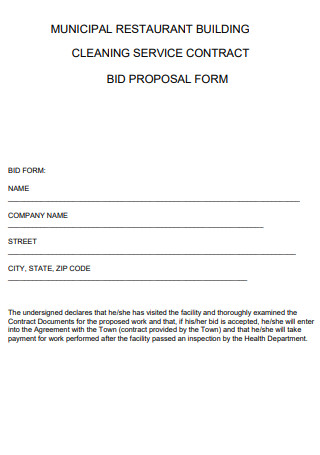
Municipal Restaurant Cleaning Proposal
download now -

Guest House And Restaurant Cleaning Proposal
download now -

Open Air Restaurant Cleaning Proposal
download now -
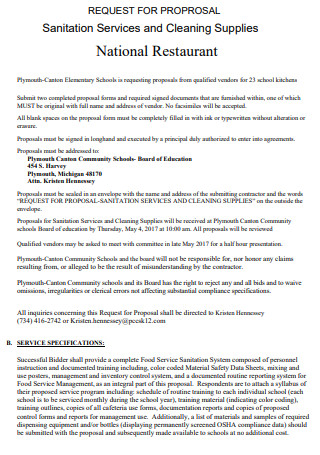
National Restaurant Cleaning Proposal
download now -
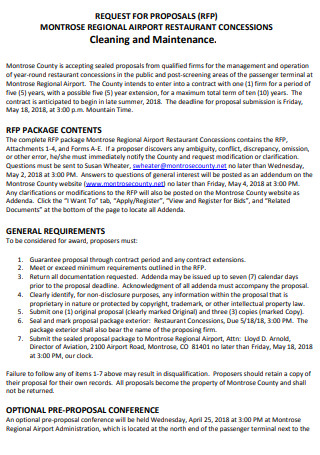
Regional Restaurant Cleaning Proposal
download now -
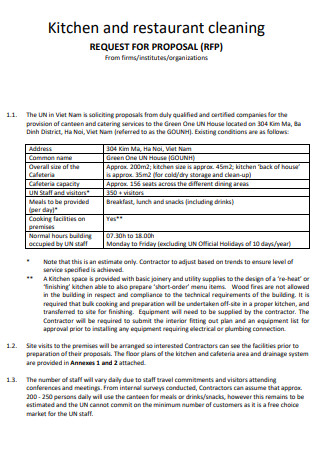
Kitchen Restaurant Cleaning Proposal
download now -

Restaurant Bar Cleaning Proposal
download now -
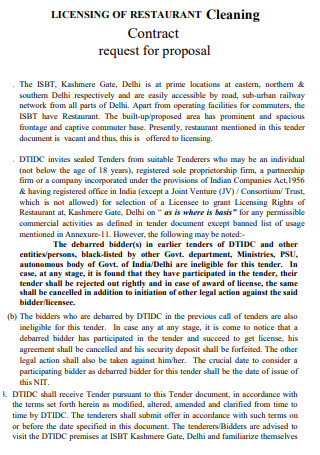
Licensing Restaurant Cleaning Proposal
download now -
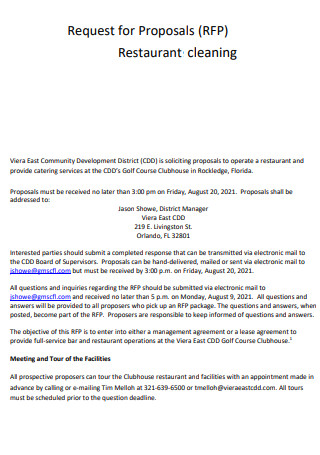
Sample Restaurant Cleaning Proposal
download now
FREE Restaurant Cleaning Proposal s to Download
8+ SAMPLE Restaurant Cleaning Proposal in PDF
What Is a Restaurant Cleaning Proposal?
Essential Equipment for Your Cleaning Business
Reminders for Restaurant Cleaning Procedures
How to Write a Restaurant Cleaning Proposal
FAQs
How much does cleaning usually cost?
Why is hygiene important in a restaurant?
How often should a restaurant be cleaned?
What Is a Restaurant Cleaning Proposal?
A restaurant cleaning proposal is a type of service proposal used to hire a service company that sends out a team or crew to ensure the cleanliness of the restaurant. The most crucial parts of the restaurant business are cleanliness, hygiene, and sanitation. Consumers will not visit your place if it is not clean, regardless matter how wonderful your cuisine is, how inventive your dishes are, or how good your service is. If you are unfamiliar with writing one, you can refer to the available restaurant cleaning proposal template and use it as a reference. Keep on reading this article.
Essential Equipment for Your Cleaning Business
Having the appropriate tools and restaurant cleaning supplies is essential for keeping your home clean and making the work as simple as possible. If you have ever tried to clean up a spill without the proper cleaning supplies, you know how frustrating it can be. While there is no one-size-fits-all solution, these things will ensure that when mishaps do occur, which they always do, you are prepared. Be sure to thoroughly review this restaurant cleaning equipment list so you won’t lack any while on the job. Check out the available restaurant cleaning checklist template as well for further information.
Reminders for Restaurant Cleaning Procedures
For the health and safety of employees and patrons, restaurants must maintain a clean and sanitary atmosphere. To ensure safe food preparation and handling, every component of the facility must be thoroughly cleaned. Restaurant managers must thoroughly inspect the kitchen, eating, and dining spaces, and restrooms to ensure that the restaurant complies with local health and sanitation regulations. If you are new to the industry, you should keep these restaurant cleaning procedures in mind. You need to be aware of these restaurant cleaning and sanitizing procedures so that customers will feel welcome and comfortable in the establishment.
How to Write a Restaurant Cleaning Proposal
Now that you have gone through the article, you have reached the point where you are ready to write the restaurant cleaning proposal. Remember that this guide is written for our usage so that you won’t have to stress over the format and content of the proposal. This article also provides you with templates and samples so that your company providing restaurant cleaning services can focus on other priorities rather than worry over the layout of the document. Without further ado, start going through the guide and you will have completed your proposal in no time.
Step 1: Provide an Introduction
Just like any other proposal, you will start with a section solely to introduce the document and what purpose it serves. Since readers will want to go through the rationale of the contents of the proposal, you need to concretely explain to them what this proposal will serve and how it can be of service to the particular restaurant owner.
Step 2: Present a Company Overview
As for the next step, you will need to elaborate on who you are as a company, the kind of objectives you want to achieve, and what motivates you. Another part of the proposal you can include here is the list of crew members you will assign to that particular restaurant. Owners will want to know the names and skills of those who will be cleaning the restaurant to see if they are fit for the role.
Step 3: List of Services Offered
Various cleaning companies will offer different cleaning services at various times of the year. Such examples include regular cleaning services that occur once a week, every other week, or once a month, occasional cleaning services, moving cleaning services, and special event or area cleaning services. You will need to specify so that even before being contracted to do the cleaning, restaurant owners are aware of what restaurant services you will and not do.
Step 4: Detail the Service Charge
You nor your company are doing this for free. Restaurant owners should not expect to hire you or your crew for free since you are pouring in your time and effort for the cleaning. Be sure to accurately charge your services and take into consideration the number of crew you are employing, the equipment, and the cleaning products you will be using. Don’t belittle your services even if you know the owner. Charge for the right price.
Step 5: Define your Terms and Conditions
After elaborating on the details from the previous steps, you will need to further define the term of agreements. This includes the amendment of services, payment method, cancellation fees, termination fees, and further disclaimers of the responsibilities your company and the cleaning crew fall under. It is important to include this so that restaurant owners won’t change their minds in the middle of hiring you to avoid wasting your time and effort in preparing and purchasing necessary equipment and cleaning products. Clarify any information that they could misunderstand.
Step 6: Secure the Signatures
For the last requirement, you will need to procure signatures from both parties. It is important to acquire the signatures as it acknowledges that both have agreed on the contents and everything included in the proposal. Any changes will then need to be approved by both parties before finalizing them in the proposal. Make sure not to forget to add a designated page or section for signatures.
FAQs
How much does cleaning usually cost?
According to PriceItHere, the average cost of commercial cleaning is $0.11 per square foot, with average cleaning rates ranging from $.07 to $.15 per square foot. Commercial cleaning costs roughly $75 per hour on average, with prices ranging from $50 to $100 per hour. If you have been in the industry for a long time, you can already set an appropriate or estimated amount to charge the restaurant owner for employing your services.
Why is hygiene important in a restaurant?
The major goal of restaurant food hygiene rules is to establish a framework that decreases the risk of food contamination and disease among consumers. This includes a critical element in maintaining food hygiene which makes it necessary that all kitchen and restaurant equipment must be properly cleaned and stored in their designated areas.
How often should a restaurant be cleaned?
Every day, after each meal service, is the easy answer. After a meal, a restaurant kitchen should never be left dirty. Cleaning will most likely take place even as food is being served, especially when it comes to pots, pans, utensils, and other kitchen objects.
You have officially reached the end of the article which has defined and explained the crucial elements there are to come up with a restaurant cleaning proposal. Make sure to keep the points in mind as you draft your document. What are you waiting for? Start writing one now and approach a restaurant owner!
